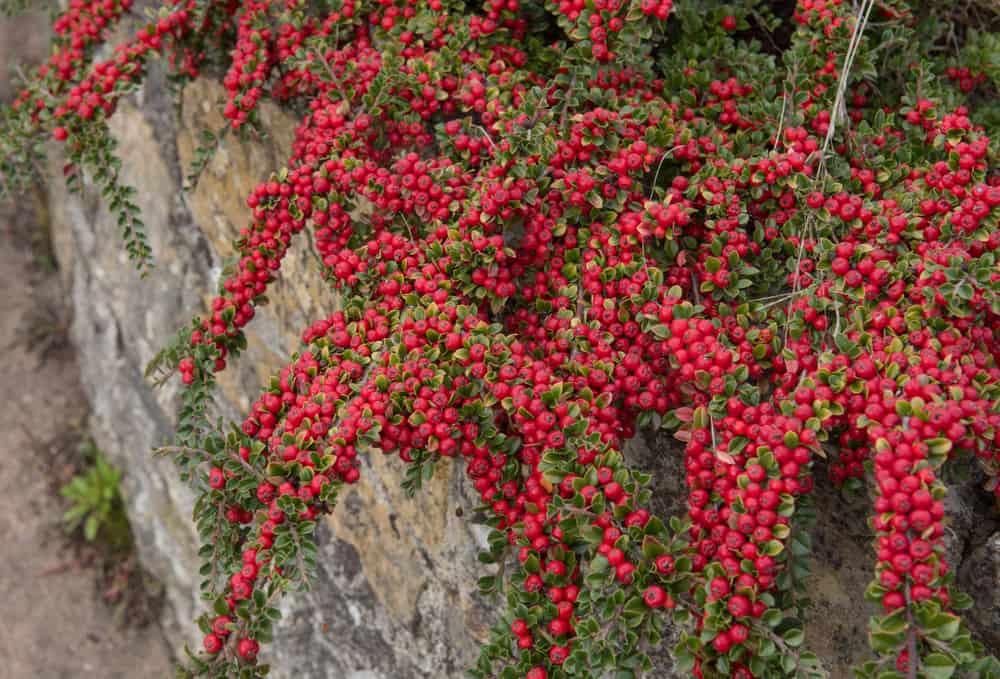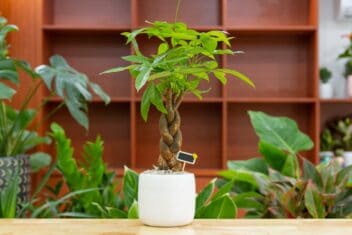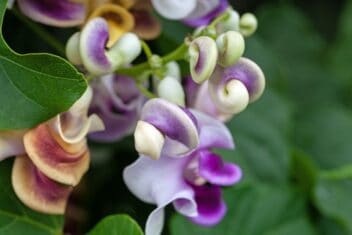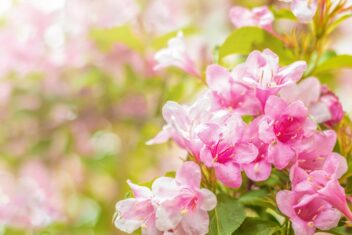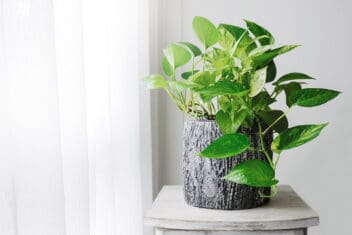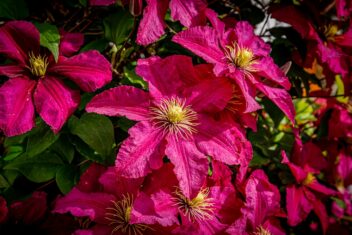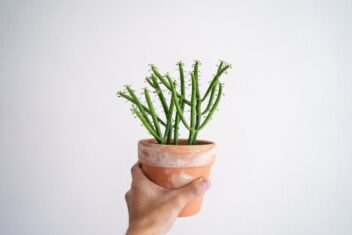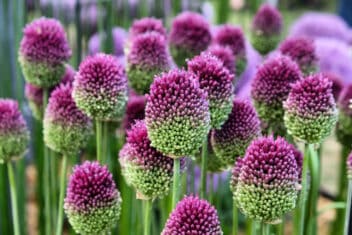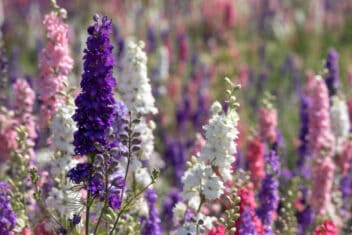Some plants are hyped to be hardy, easy to grow, and suitable in all many settings. When you plant them, however, they are anything but. The same can’t be said about growing cotoneaster.
This plant is truly exceptional. Cotoneasters are hardy and come in tons of different cultivars with different growth habits, from ground cover and hedges to towering specimens.
Some species provide color over all four seasons. Spring brings deep green foliage, summer brings the formation of flowers and berries, and fall provides the bright color changes of the berries. Evergreen types have glossy green foliage all winter.
Have I got you interested in cotoneasters yet?
What Are Cotoneasters?
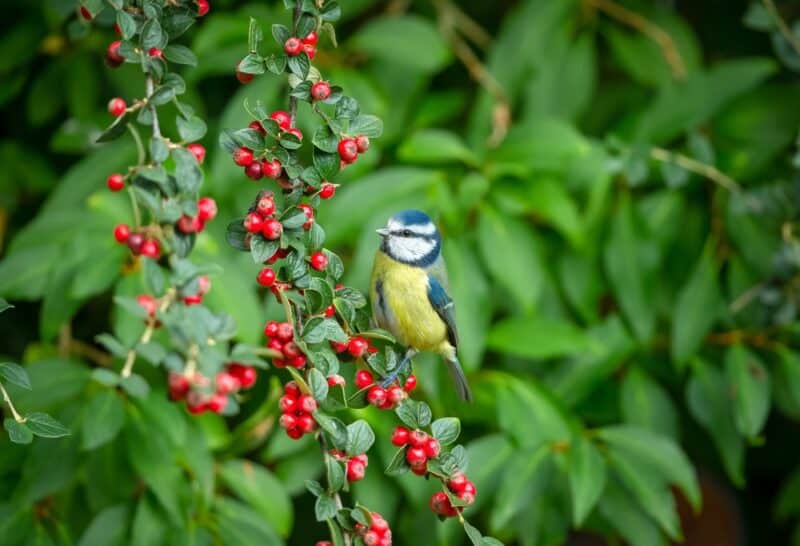
Most cotoneasters are hardy in USDA Growing Zones 4 to 9, but some are cold hardy in Zone 3.
Cotoneaster is from the rose family (Rosaceae) and related to hawthorns and rowans. They are cold-hardy, and once established, they are drought-tolerant.
They also tolerate a range of conditions and environments. They can handle wind, salt spray, and changing temperatures. You also get to provide food for birds in cooler months with berries. As you can see, they have a lot to offer!
There are cotoneasters to suit any planting condition. Low-growing varieties hug the ground, while some grow as hedges or taller. You can even grow them as bonsai.
Grow cotoneasters in containers, espaliered, or plant on a drab bank that needs color and erosion control.
Native to temperate areas of North Africa, cotoneaster is a reliable perennial. There are both deciduous and evergreen varieties. The deciduous types are best suited to cold regions because they’re hardIer. Evergreen types prefer warmer areas.
Best Species and Cultivars of Cotoneasters
There are so many varieties of cotoneasters and styles that this list could go on for days. , We’ll look at a few of our favorites, but feel free to chat with your local nursery. They always know what’s best suited to your climate.
If you’re looking into growing cotoneasters, it helps to narrow down the growth habit you prefer:
Low Growing Cotoneasters
Like many ground cover type plants, cotoneaster low-growing varieties self-root and become dense as they spread.
Tom Thumb: This is a dwarf creeping cultivar of C. adpressus. It’s deciduous to semi-evergreen, depending on the Zone you grow it in. ‘Tom Thumb’ doesn’t flower or produce berries regularly, but the foliage is a fantastic crimson through fall. it’s is hardy in Zones 4 to 7.
Eichholz: Perfect for Zones 5 to 8, this C. dammeri cultivar is an extremely low-growing variety growing to about one foot high and 10 feet wide. You will see a bright orange-red fall color and a lot of ornamental berries.
Coral Beauty: This broadleaf C. suecicus cultivar grows rapidly to two feet tall and six feet wide. Plant ‘Coral Beauty’ where you have full sun.
Tibetan: A little taller than some prostrate types, Tibetan cotoneaster (C. Conspicuus) grows to four feet tall but spreads eight to ten feet. Excellent for edges or borders in Zones 5 to 9.
Upright and Shrub Cotoneasters
Black-Fruited: C. melanocarpus is a medium-sized shrub that is drought tolerant when well established. White flowers form in spring before the orange berries turn deep purple. In fall, the foliage is varying shades of orange, red, and yellow. Hardy in Zones 3 to 7.
European: Plant C. integerrimus in areas with cool summers and this deciduous variety won’t let you down. It grows up to five feet tall with a similar spread. Use it as a wind-break, hedging, or privacy screen.
Franchet’s: At a height of ten feet and eight feet wide, Franchets (C. franchetii) makes a statement. The undersides of the green leaves are gray with orange berries. Cold areas will see the leaves turn yellow before dropping off the tree. Use as a colorful barrier in Zones 5 to 9.
Hedge: Also known as shiny cotoneaster, hedge (C. lucidus) is the perfect foundation plant to place by a wall or fence, or to use as a trimmed hedge. The colors are amazing. Through fall you’ll get red, orange, burgundy, and yellow.
Hollyberry: This species (C. bullatis) will grow up to 12 feet tall so it’s a big one. Perfect for privacy hedges in Zones 5 to 9, hollyberry turns vibrant scarlet in the fall.
Many-Flowered: A weeping form and colors of red and yellow in fall make this tall cotoneaster (C. bullatis) stand out. At a height of 15 feet in ones 4 to 8, it’s perfect for bank stabilization or hedges.
Other awesome cotoneasters include:
- Rockspray (C. horizontalis): a dense creeper
- Spreading (C. divaricatus): has a delightful rounded shape and bright fall foliage
- Willowleaf: (C. salicifolius): lustrous semi-evergreen green leaves
- Tree (C. frigidus): Grows up to 20 feet tall, perfect for training as a tree form
How to Propagate Cotoneasters
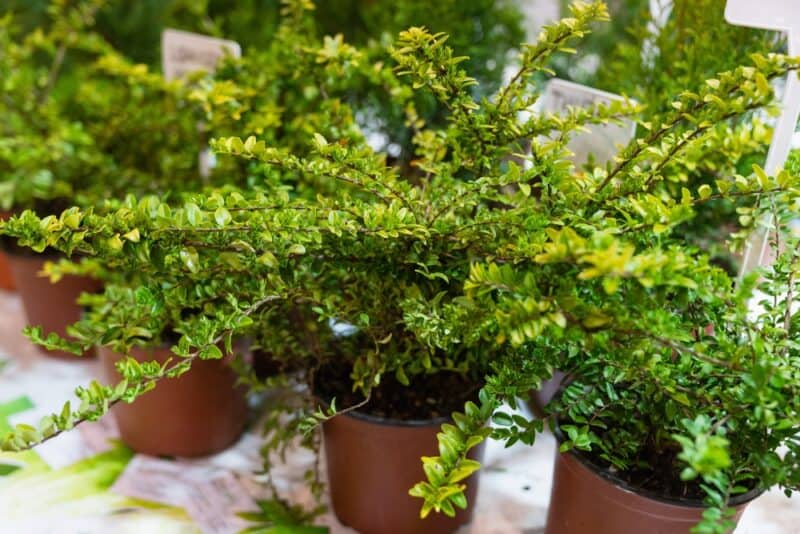
While you can try grafting, the best propagation methods for beginners are cuttings or seeds. Let’s check out these options for propagating and growing cotoneasters.
Cuttings
For deciduous cotoneasters, take softwood cuttings in summer. Try for the middle of the season. For evergreens, use semi-hardwood, but wait for the end of the summer season.
- Take a six to eight-inch cutting.
- Remove the bottom third of the foliage.
- Remove the bark on the first two inches of the cutting to improve the chances of rooting.
- Dip in rooting hormone.
- Push into pots of seed-raising medium and moisten the soil with a spray bottle.
- Put the containers in a cold frame or sheltered area outside in the winter, but be careful the medium doesn’t dry out or get too wet.
- Plant out in spring after hardening off.
Seeds
Collect the seeds from ripe berries in the fall. Remove from the berries and rinse off any pulp. You must stratify them before planting, so let’s look at that now.
- The first step is to scratch the hard surface to encourage germination. Put the seeds in your palm with sand and grind your hands together gently. Or use fine-grit sandpaper.
- Fill a container with a seed-raising mix, with the last inch or so with the sand and seed mix.
- Cover lightly with more seed-raising mix and moisten.
- Place the container in a cold frame or in a sheltered location that doesn’t get too warm.
- Plant out in spring when you know there will be no more frosts.
Your other option for growing cotoneasters is to simply buy some! Most nurseries care at least one or two types.
How to Care for Cotoneasters
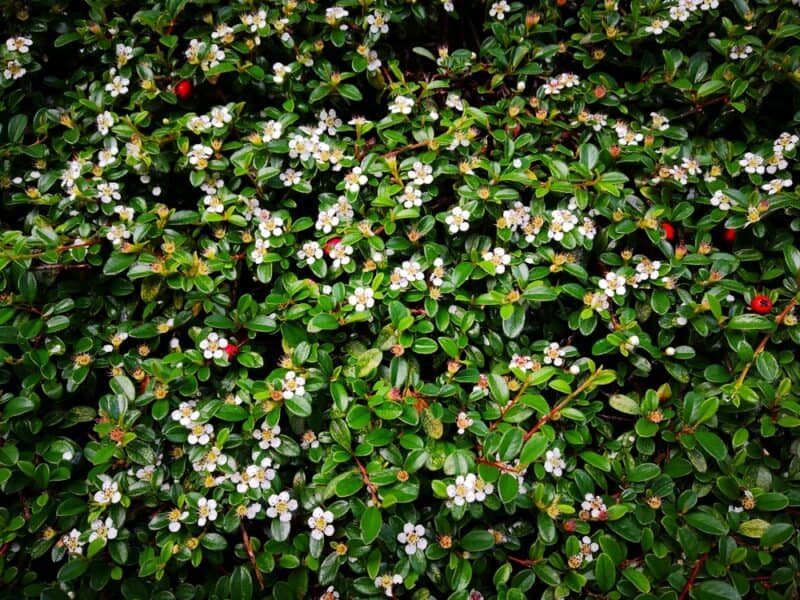
One of the fantastic things about growing cotoneaster is they are certainly not fussy.
As long as the soil is free draining, a pH range between 5.0-8.0 is fine.
Avoid direct application of fertilizer, as this sometimes causes the plant to struggle with disease. Feed the surrounding garden plants, or provide the cotoneaster with well-rotted manure or compost. Mulch to suppress weeds around the base of the plant.
Cotoneasters don’t need a lot of water. Provide water during prolonged periods of drought, but if it receives rainfall regularly, that is usually sufficient. Keep an eye out, and provide water if it looks like it’s wilting.
Plant in full sun. You can plant cotoneasters in partial shade, but those planted in full sun grow better, develop more branches, flowers, and berries, and grow brighter foliage.
Pruning Cotoneasters
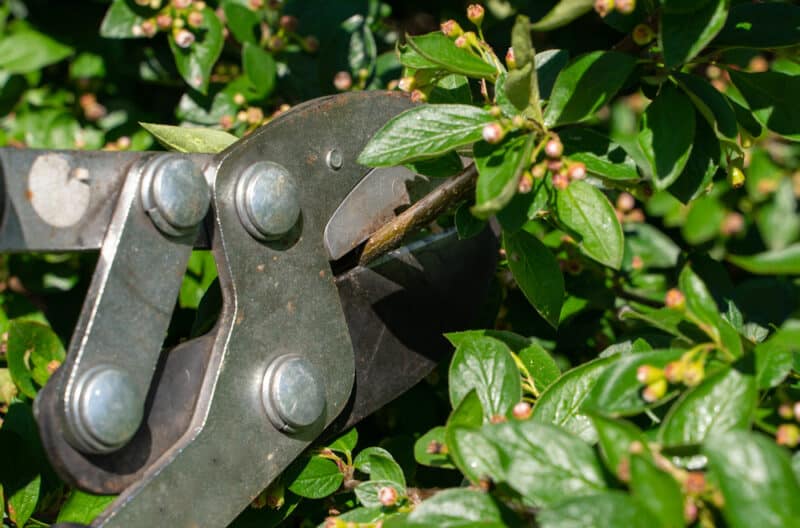
It depends on your style choice on whether you prune or not. I have cotoneasters on banks that I don’t prune, and I prune others in a formal garden yearly.
Pruning will make them dense and encourages lots of berries and flowers. Prune in early spring, but ensure it’s before new growth appears.
Remove dead, diseased, or dying branches. Cut them at their base or you will cause them to grow back messily.
If air circulation is an issue and causing disease, remove old branches from the center to promote good airflow.
For hedges, espaliers, and topiary, trim to shape.
Best Companion Plants for Cotoneasters
When growing cotoneasters, you can leave them as a solitary specimen plant, or you can grow them with some fun friends. Here are a few options:
- Lilacs (Syringa spp.)
- Spirea (Spirea spp.)
- Chinese Fringe Flower (Loropetalum chinense)
- Rosemary Barberry (Berberis × stenophylla)
- Holly Osmanthus (Osmanthus heterophyllus)
Problems and Solutions for Growing Cotoneasters
When growing cotoneasters, you’ll find they’re rarely affected too much by pests and diseases, but it does happen. Here are the most common ones.
In addition to these problems, powdery mildew may also be an issue. Check out our guide for tips on how to spot it and get rid of it.
Oystershell Scale
Oystershell scale (Lepidosaphes ulmi) is an armored pest that can cause the plant to suffer and lose vigor, though it’s not usually fatal. The insect uses its sucking mouthparts to feed on the contents of the cells of the plant.
Oystershell scales overwinter and emerge as little white crawling insects. They rapidly form a waxy armor and start devouring the plant nutrients.
Apply dormant oil before bud break in spring and scrape or scrub away any eggs you see on the stems. Prune away heavily infested branches.
Aphids
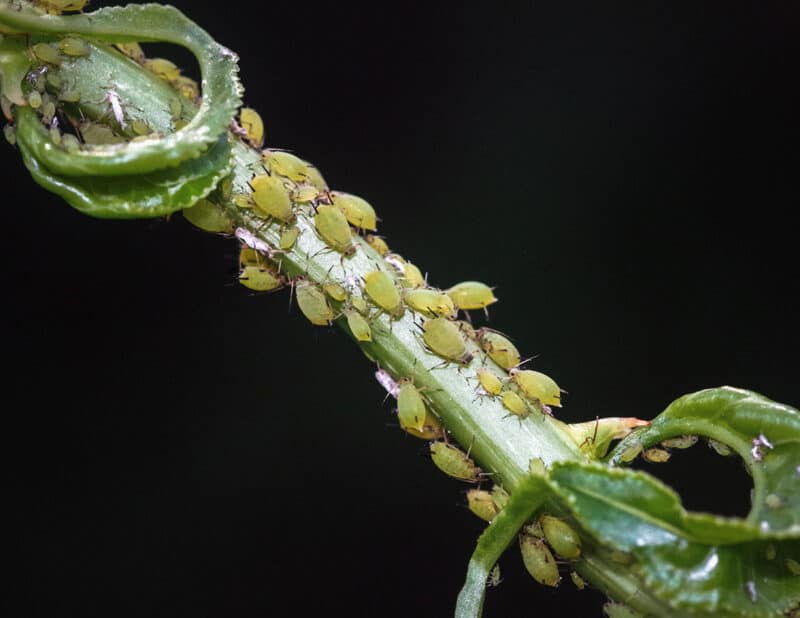
Like scale insects on cotoneaster, aphids may not be a massive problem if you keep the numbers low. Read our article here on how to identify and treat aphids.
Fire Blight
Fire blight is caused by a bacterium called Erwinia amylovora. It is the same fire blight that infests apples and pears.
When present, you will see the foliage dying, drying out, and looking dark, as if it has caught fire. Bacterial ooze may appear on larger branches and twigs.
Prune out the infected branches and twigs and dispose of them off the property or burn them.
Since there is no cure, plant some resistant varieties to avoid it. Ask at your local plant nursery for a few that grow well in your area.
The species C. adpressus var. praecox, C. amoenus, C. apiculatus, C. canadensis, C. dammeri var. radicans, C. microphyllus, C. nitens, and C. zabelii have all been reported to be resistant.
You could also try a copper-based fungicide to help delay the progression.
Entomosporium Spot
You’ll likely notice small rings on the foliage’s top and bottom that look like water spots. They are often black in the center of the ring.
While a light infection is just a cosmetic issue, a serious infection causes leaf drop or severe defoliation.
Spores are released by the infected parts of the plant and spread to healthy foliage. Water and wind play a role in the spread., which is why this bacterium is common during particularly wet springs.
Spray a general fungicide regularly at bud break until the foliage is mature. Don’t plant new plants that show bacterial disease; remove all fallen leaves that may carry the bacterium.
